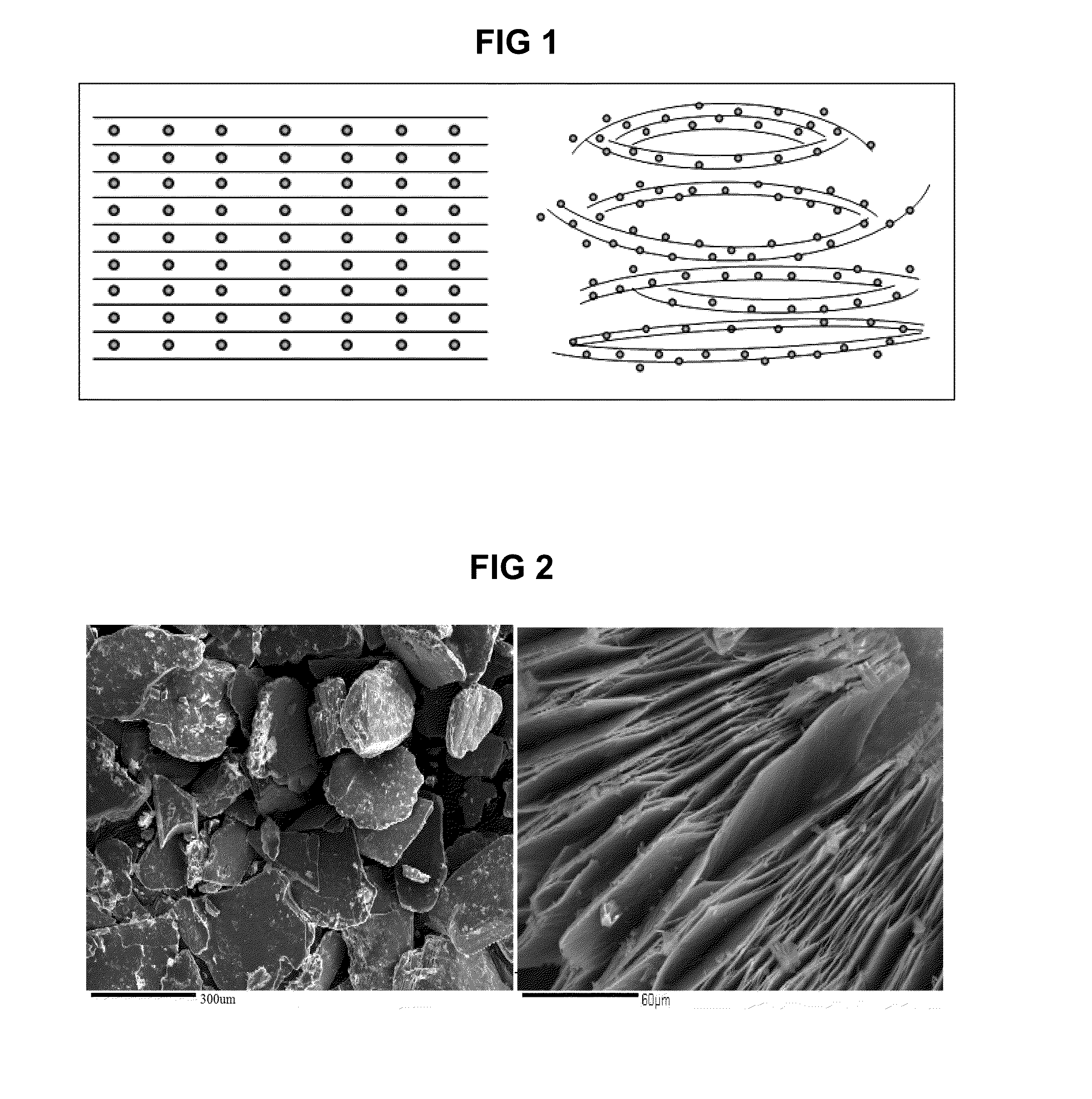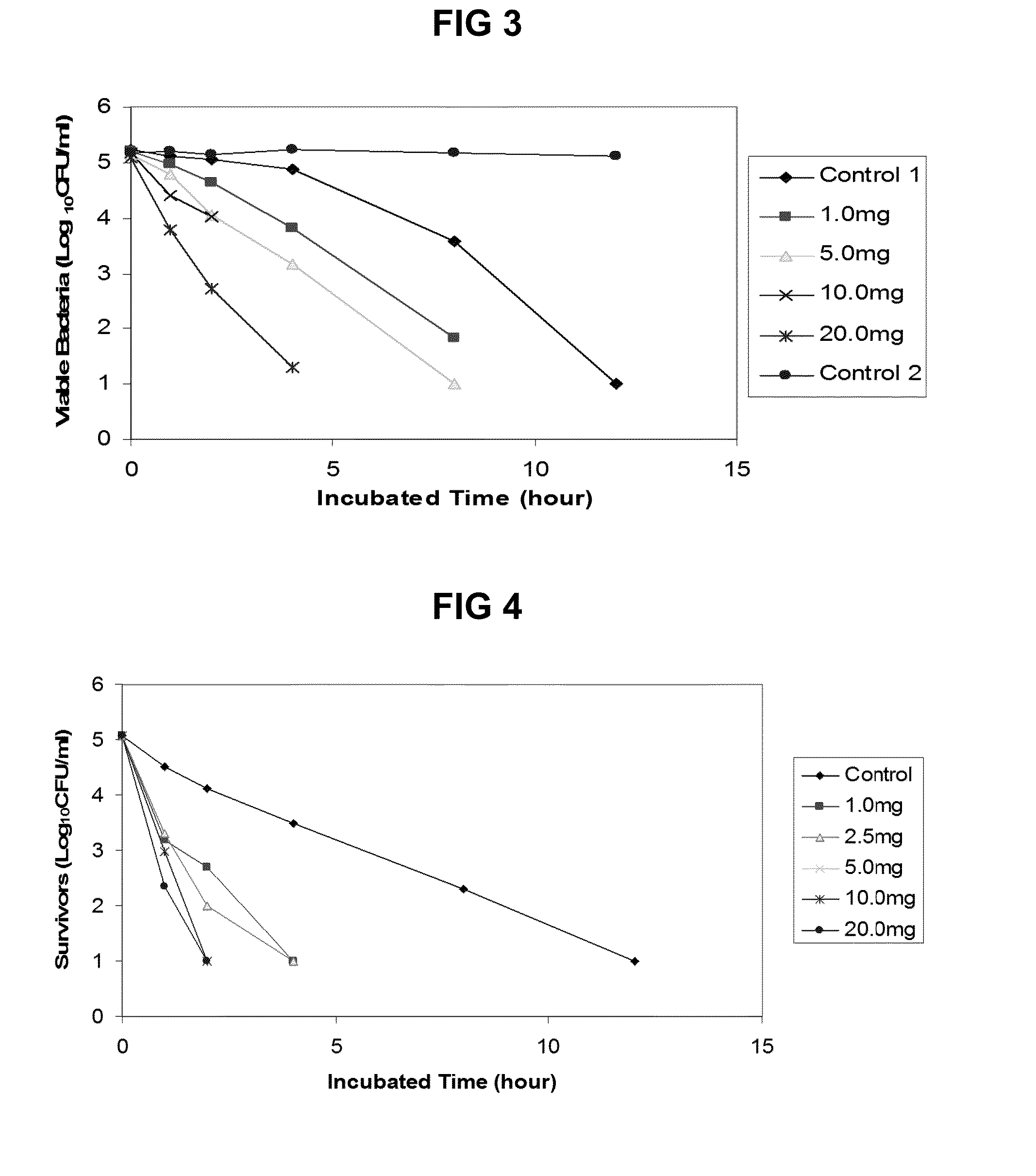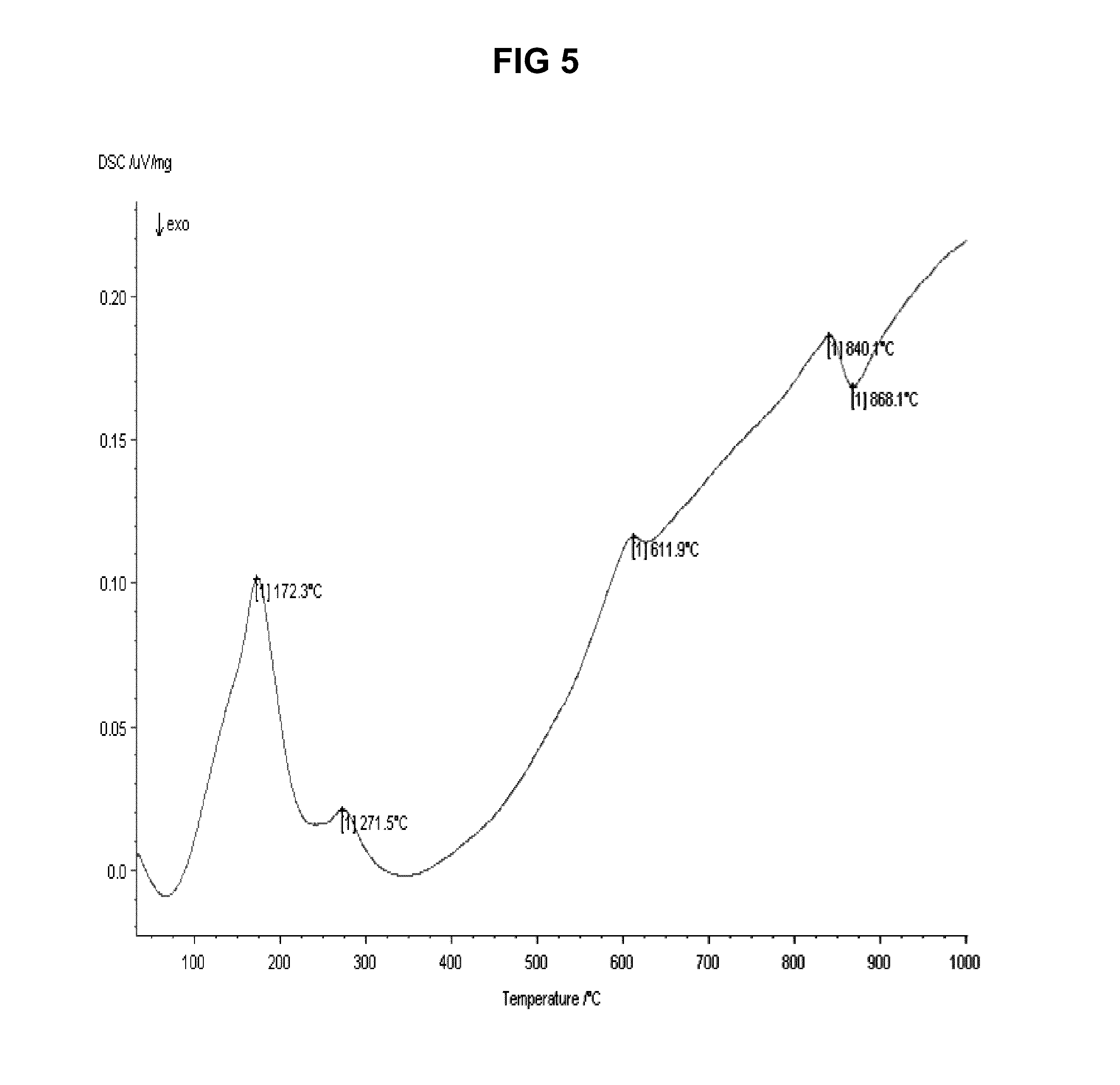Antimicrobial Exfoliated Vermiculite Composite Material and Methods for Preparing the Same
a technology of exfoliated vermiculite and composite materials, which is applied in the field of antimicrobial composite materials, can solve the problem of no report on the making of antimicrobial exfoliated vermiculi
- Summary
- Abstract
- Description
- Claims
- Application Information
AI Technical Summary
Benefits of technology
Problems solved by technology
Method used
Image
Examples
example 1
[0130]Prepared 0.1M copper solution by dissolving 25 grams of pentahydrated copper sulfate, CuSO4.5H2O into 1000 ml of deionized water. Weighed and placed 100 grams of dried exfoliated vermiculite (commercially product, “Milled No. 7”, available from Virginia Vermiculite LLC, Louisa, Va.) into a 5 liter of stainless steel reactor, then poured 3000 ml 0.1M copper solution into the reactor, adjusted pH value of the solution to 3-4 with 1M NaOH solution and 10% HCl solution. Heated the solution and maintained the temperature at around 80° C. Gently blended the suspension for 2 hours for complete reaction. The suspension after reaction was filtered with filter paper or pressure filter. The residue was washed with distilled water, and then dried at 100° C. for 2 hours. The dried powder was said antimicrobial exfoliated vermiculite composite material.
[0131]By chemical analysis, this dried antimicrobial exfoliated vermiculite contains 3.6 weight percent of metal copper.
example 2
[0132]Prepared 0.2M silver solution by dissolving 34 grams of silver nitrate, AgNO3 into 1000 ml of deionized water. Weighed and placed 10 grams of dried exfoliated vermiculite (commercially product, “Milled No. 7”, available from Virginia Vermiculite LLC, Louisa, Va.) into a 500 ml brown glass flask, then poured 250 ml 0.2M silver solution into a chemical reactor, placed a magnetic stirrer which 0.5 inches in length and covered with Teflon, adjusted pH value of the suspension to 3-4 with 10% HCl solution. Put the suspension onto a hotplate, heated the suspension and maintained the temperature at around 85° C. Blended the suspension with the magnetic stirrer for 2 hours for complete reaction. The suspension after reaction was filtered with filter paper. The residue was washed with deionized water, and then dried at 100° C. for 2 hours. The dried powder was said antimicrobial exfoliated vermiculite composite material.
[0133]This procedure was completed in a dark room. All the containe...
example 3
[0135]0.1M copper solution was prepared by dissolving 14 grams of copper chloride, CuCl2 into 1000 ml of deionized water. Weighed and placed 50 grams of exfoliated vermiculite (commercially product, “Milled No. 7”, from Virginia Vermiculite LLC, Louisa, Va.) into a 3 liter of stainless steel reactor, then poured 1500 ml 0.1M copper solution into the reactor, adjusted pH value of the solution to 3-4 with 1M NaOH solution and 10% HCl solution. Gently blended the suspension for 8 hours for complete reaction. Filtered the suspension with filter paper. The residue was washed with distilled water, and then dried at 100° C. for 2 hours.
[0136]The dried powder was said antimicrobial exfoliated vermiculite composite material. According to chemical analysis, this dried antimicrobial exfoliated vermiculite contents 3.2 weight percent of metal copper.
PUM
| Property | Measurement | Unit |
|---|---|---|
| size | aaaaa | aaaaa |
| temperature | aaaaa | aaaaa |
| density | aaaaa | aaaaa |
Abstract
Description
Claims
Application Information
 Login to View More
Login to View More - R&D
- Intellectual Property
- Life Sciences
- Materials
- Tech Scout
- Unparalleled Data Quality
- Higher Quality Content
- 60% Fewer Hallucinations
Browse by: Latest US Patents, China's latest patents, Technical Efficacy Thesaurus, Application Domain, Technology Topic, Popular Technical Reports.
© 2025 PatSnap. All rights reserved.Legal|Privacy policy|Modern Slavery Act Transparency Statement|Sitemap|About US| Contact US: help@patsnap.com



